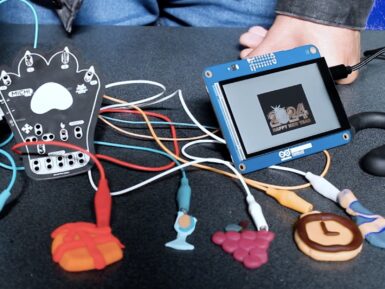
Overview
Analog pH Sensor / Meter Kit specially designed for Arduino controllers and has convenient and practical "Gravity" connector and a bunch of features. Instant connection to your probe an your Arduino to get pH measurements at ± 0.1pH (25 ℃). For most hobbyist this great accuracy range and it's low cost makes this a great tool for biorobotics and other projects! It has an LED which works as the Power Indicator, a BNC connector and pH2.0 sensor interface. To use it, just connect the pH sensor with BND connector, and plug the pH2.0 interface into the analog input port of any Arduino controller. If pre-programmed, you will get the pH value easily. Comes in compact plastic box with foams for better mobile storage.
Build your own pH meter gadget, or a water monitoring station for your water tanks. It could make for the ultimate water control device. Use it for your aquaponics or fish tanks or other materials that need measurements.
Tech specs
- Module Power : 5.00V
- Module Size : 43 x 32mm(1.69x1.26")
- Measuring Range :0 - 14PH
- Measuring Temperature: 0 - 60 ℃
- Accuracy : ± 0.1pH (25 ℃)
- Response Time : ≤ 1min
- pH Sensor with BNC Connector
- pH2.0 Interface ( 3 foot patch )
- Gain Adjustment Potentiometer
- Power Indicator LED
Get Inspired

Display real-time meeting room availability, synchronized with Google Calendar through Arduino IoT Cloud.

Watching back a slideshow of some of your favorite times of the past years is a great way to reflect on what’s happened and get excited for the future. The Electronic Cats crew wanted to incorporate this concept into a more simplified, interactive form which resulted in the Garrita project. Garrita is a homemade platform that lets an Arduino GIGA R1 WiFi with GIGA Display Shield transform into a highly mobile slideshow thanks to its larger onboard memory capacity and convenient layout. This year, the Electronic Cats were able to take their image shifter concept even further with Michi: an existing project that turns any conductive object into a capacitive touch-sensing controller. Whenever one of Michi’s inputs are toggled, the board sends a signal to the GIGA R1 WiFi that causes the current slide to advance to the next one. In order to go from a locally stored image to something on the Display Shield, users first transform their images into a more suitable format via the LVGL conversion tool. Once downloaded, the resulting files can be easily bundled into a Sketch before they become accessible in the application code. To see more about how the Electronic Cats built Garrita, you can read their write-up here on Hackster.io.









